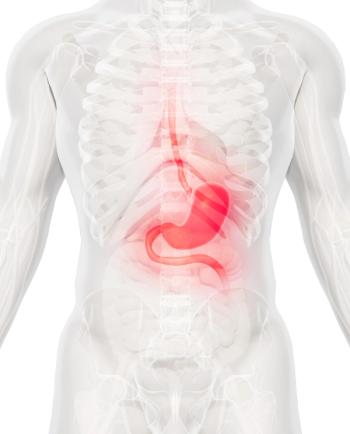
TissueCypher Barrett’s Esophagus Test Increases Risk Assessment Accuracy in High-Grade Dysplasia/Esophageal Adenocarcinoma
Results from a randomized controlled trial highlighted that the TissueCypher Barrett’s Esophagus Test heightened accuracy for assessing progression risk in high-grade dysplasia and esophageal adenocarcinoma among patients with Barrett’s esophagus.
The TissueCypher Barrett’s Esophagus Test appeared to significantly improve the accuracy in estimating risk of disease progression and yielded better adherence to guideline recommendations for patients with high-grade dysplasia or esophageal adenocarcinoma with Barrett’s esophagus, according to a press release from Castle Biosciences.1
The precision medicine diagnostic tool was assessed as part of a randomized trial, the findings of which indicated that those with high-grade dysplasia and esophageal adenocarcinoma who received TissueCypher testing were up to 65.6% more likely to have disease progression predicted vs those who didn’t undergo testing, according to lead author John W. Peabody, MD, PhD, president of QURE Healthcare. The experimental cohort was also found to be more likely to adhere to guideline-recommended management strategies after receiving test results and assessment.
The trial included 259 physicians who were randomly assigned to 1 of 3 treatment arms: the control cohort (n = 90)—which received no test results in either round; the intervention arm 1 (n = 91)—which received no test results in the first round and did receive results in the second round; and intervention arm 2 (n = 78)—which received no results in the first round and results that were ordered optionally in the second. Moreover, those included in case A had high clinical risk factors and high TissueCypher risk class, case B had low clinical risk factors and high TissueCypher risk class, and Case C had high clinical risk factors and low Tissue Cypher risk class.
In round 1 of case A, the accuracy of predicting progression was 28.30%, 19.40%, and 27.6% in the control, intervention 1, and intervention 2 arms, respectively, and 26.10%, 77.50%, and 40.90% in round 2. In round 1 of case B, the accuracy was 12.00%, 10.20%, and 9.4% in each respective arm; in round 2, the accuracy was 8.30%, 72.20%, and 25.30%, respectively. In case C, round 1, the accuracy in the control, intervention 1, and intervention 2 groups, respectively, were 19.60%, 30.50%, and 25.6%; for round 2, it was 25.60%, 69.10%, and 45.20%.
“We were very excited to present the results of the QURE study, which help further demonstrate TissueCypher's potential to meaningfully advance the care of this important patient population. We believe the clinical utility and objective information provided by our test can equip physicians with the information they need to make more informed treatment plan decisions and move beyond the limitations in the current standard of care for risk stratification of patients with [Barrett’s esophagus],” Craig Munroe, MD, medical director of gastroenterology at Castle Biosciences, said in the press release.
The TissueCypher test was designed to predict progression to high grade-dysplasia and/or esophageal adenocarcinoma within 5 years among those with Barrett’s esophagus. In March 2022, the Centers for Medicare and Medicaid Services gave the test Advanced Diagnostic Laboratory Test status.
Physicians who participated in the trial also received a set of clinical performance and value vignettes (CPVs) to help with evaluation during the first round of assessment. Moreover, quality-of-care percentages (0-100%) were compiled using CPVs based on guidelines from the American College of Gastroenterology and American Society of Gastrointestinal Endoscopy. Trial investigators used a fixed effects difference-in-difference model to evaluate the impact of the assay.
Data from the trial were highlighted as part of a poster presentation during the 30th United European Gastroenterology Week.
References
- Results from a randomized controlled trial show that TissueCypher® Barrett’s esophagus test results can significantly improve the accuracy of risk assessments and adherence to guideline-recommended patient management. News release. Castle Biosciences, Inc. October 13, 2022. Accessed October 14, 2022. https://bwnews.pr/3EDYkat
- Peabody JW, Cruz J, Ganesan D, et al. Results from a randomized controlled trial: introducing a precision medicine diagnostic tool increases adherence to guidelines in patients with Barrett’s esophagus. Presented at: 30th United European Gastroenterology Week; October 8-11, 2022; Vienna, Austria. Accessed October 14, 2022. https://bit.ly/3erX67H
Newsletter
Stay up to date on recent advances in the multidisciplinary approach to cancer.
































































































